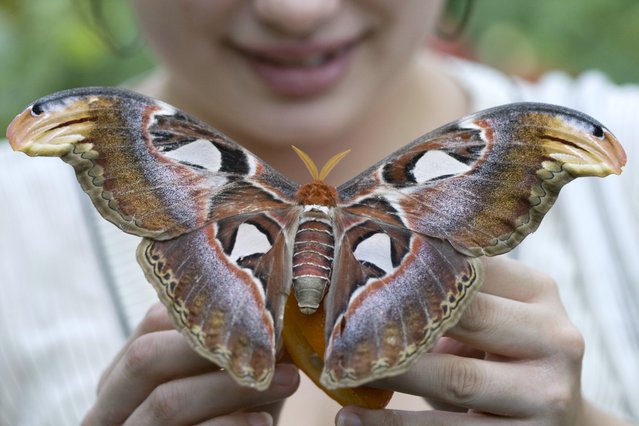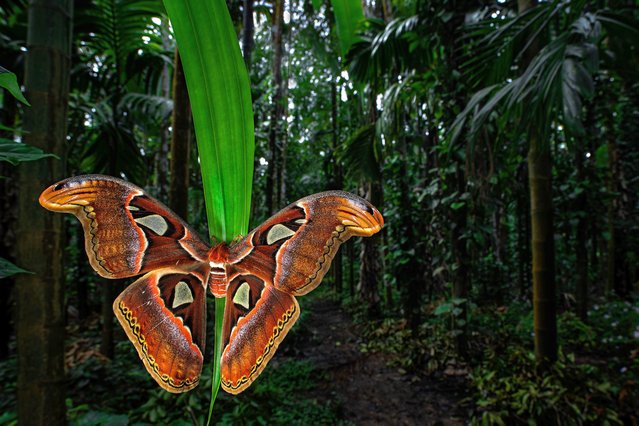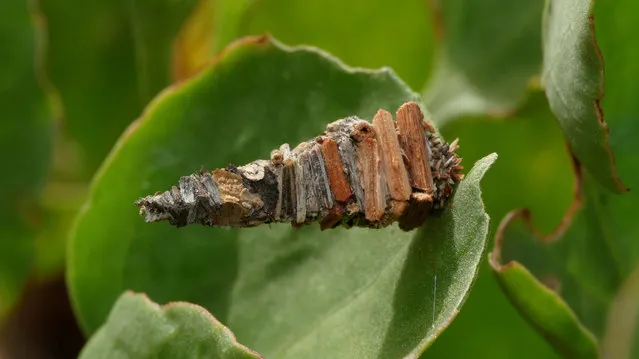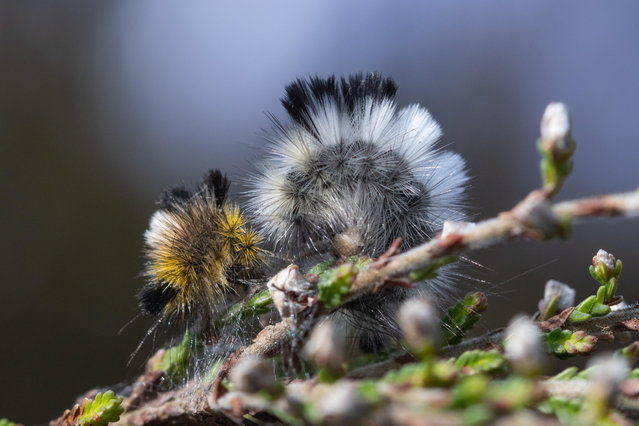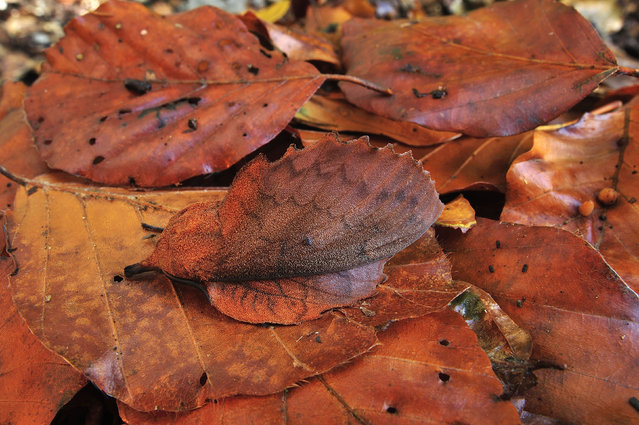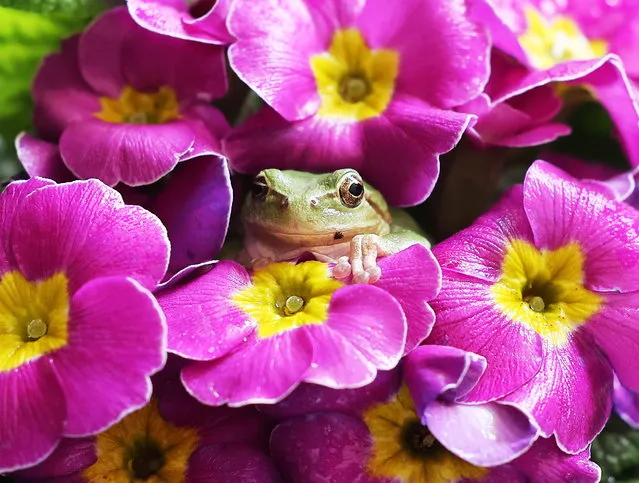
A green frog sits on a moth orchid at a local agricultural research center in Hwaseong, about 40 kilometers south of Seoul, South Korea, 03 March 2022, two days ahead of “gyeongchip”. On the lunar calendar, gyeongchip is the day when frogs awake from hibernation. (Photo by Yonhap/EPA/EFE)
